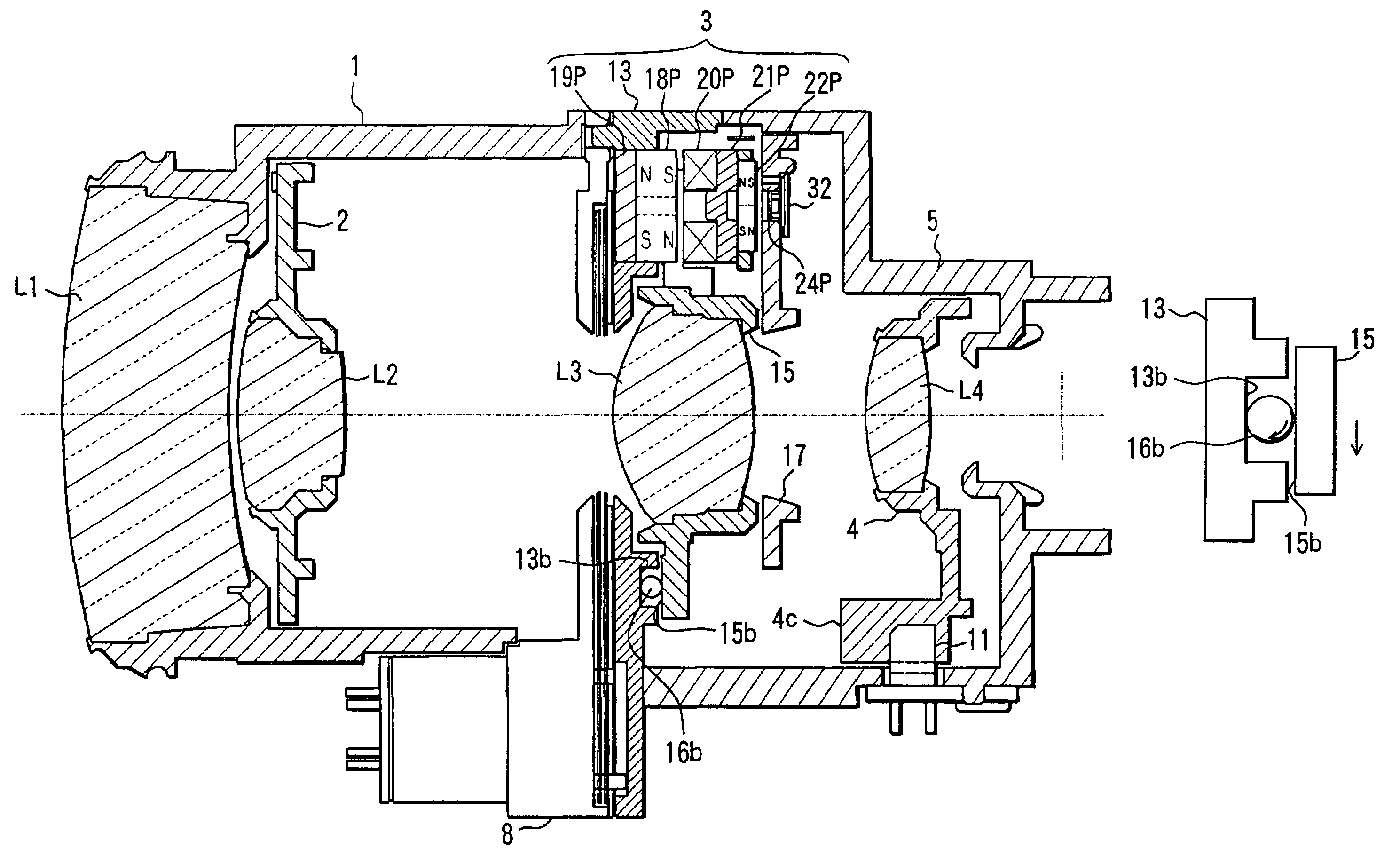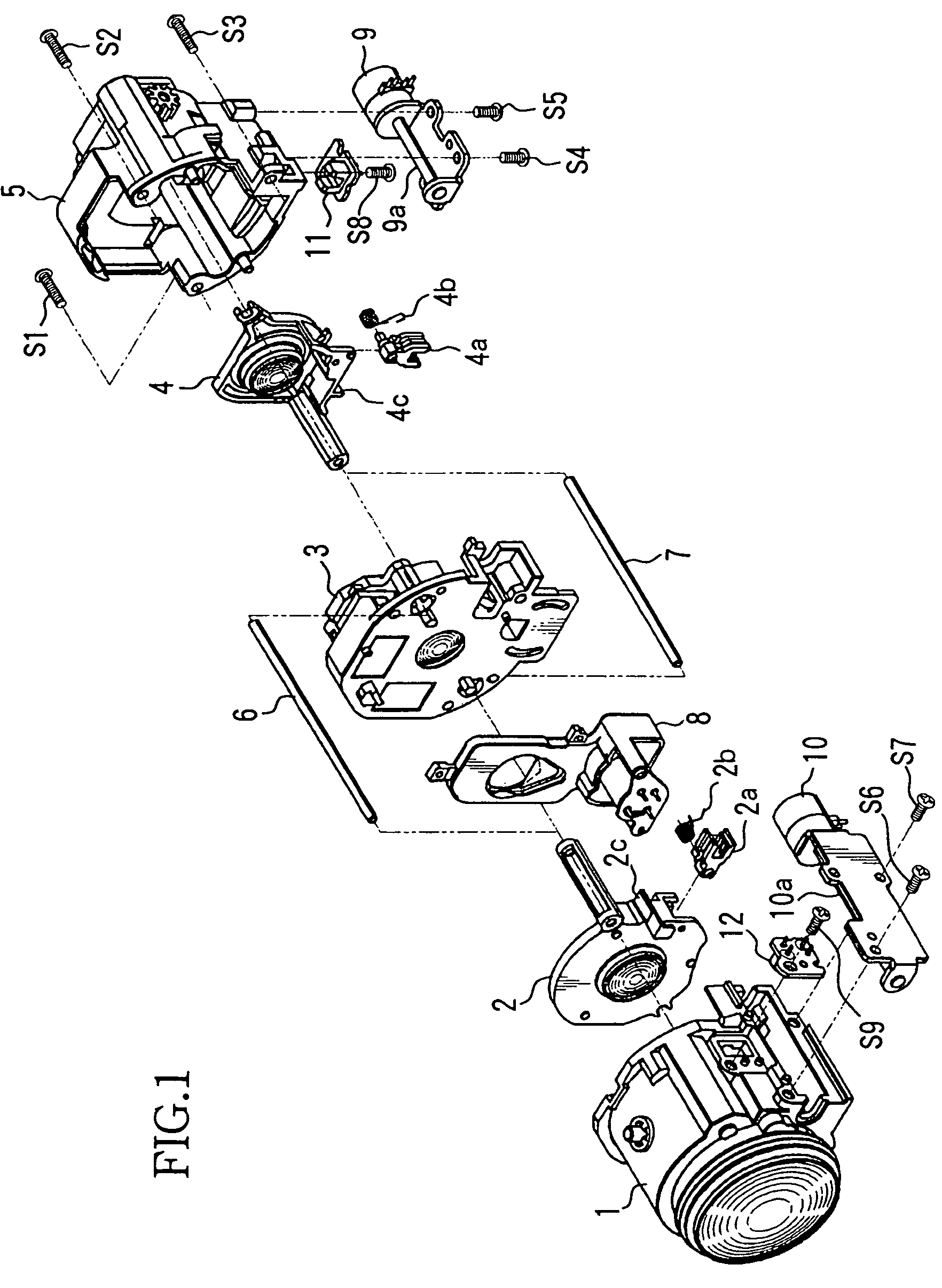Vibration correcting device, lens barrel, and optical device
a vibration correction and lens barrel technology, applied in the field of image vibration correction devices, can solve the problems of harmfully affecting the drive of the shift member, difficult to reduce the rigidity of the flexible substrate, and difficult to reduce the elastic force in the optical axis direction to be generated on the flexible substrate to a permissible level, so as to reduce the frictional force of the drive, prevent the influence of the elastic force in the optical axis direction of the flexible substrate, and improve the effect of optical performan
- Summary
- Abstract
- Description
- Claims
- Application Information
AI Technical Summary
Benefits of technology
Problems solved by technology
Method used
Image
Examples
Embodiment Construction
[0116]FIG. 1 and FIG. 2 show the construction of a lens barrel with a vibration correcting device of an embodiment of the invention. FIG. 1 shows the exploded perspective view of the lens barrel, and FIG. 2 shows the sectional view of the lens barrel. This lens barrel is used for a shooting device such as a video camera.
[0117]The optical system of this lens barrel is a zooming optical system composed of four groups, that is, a positive lens component, negative lens component, positive lens component, and positive lens component in order from the subject or observing object side.
[0118]L1 shows a fixed first lens group, L2 shows a second lens group which moves in the optical axis direction to carry out zooming operation, L3 shows a third lens group (vibration correcting lens: hereinafter referred to as shift lens) which moves within the optical axis orthogonal plane to carry out vibration correcting operation, and L4 shows a fourth lens group which moves in the optical axis direction ...
PUM
 Login to View More
Login to View More Abstract
Description
Claims
Application Information
 Login to View More
Login to View More - R&D
- Intellectual Property
- Life Sciences
- Materials
- Tech Scout
- Unparalleled Data Quality
- Higher Quality Content
- 60% Fewer Hallucinations
Browse by: Latest US Patents, China's latest patents, Technical Efficacy Thesaurus, Application Domain, Technology Topic, Popular Technical Reports.
© 2025 PatSnap. All rights reserved.Legal|Privacy policy|Modern Slavery Act Transparency Statement|Sitemap|About US| Contact US: help@patsnap.com



